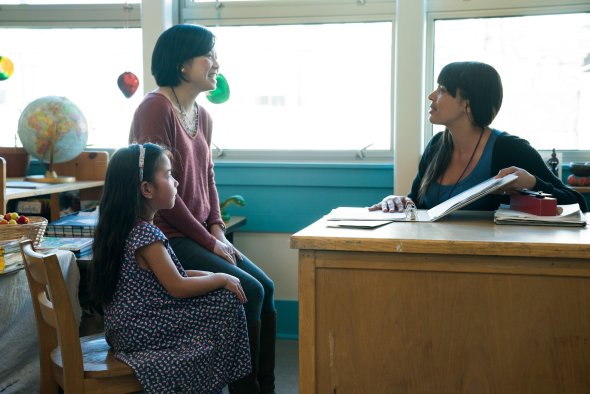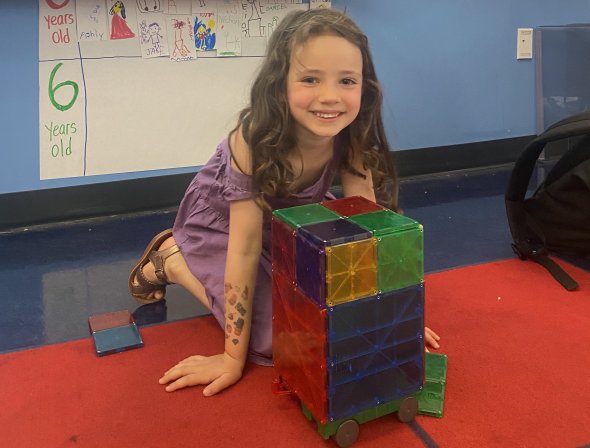
Special Education Overview
Disabilities that affect learning are common. About one student out of eight in the US formally qualifies for some form of help to support their learning needs. The public education system is designed to serve all students, without exception. Both federal and state laws define and protect this mission. This lesson of Ed100 summarizes how schools serve students with special needs.

Measuring Student Progress
Reviewing IEP Progress Reports are an opportunity to check in with teachers to find out how your child is doing at school and the progress they are making on their IEP Goals.
Click the link below to read an article from The Center for Parent Information & Resources on Measuring & Reporting Student Progress.

Special Education Placement
Once the IEP team has decided what services a child needs, a decision must be made about where services will be provided. Where the child’s IEP is carried out is called placement. Parents have the right to be part of the group that decides the child’s placement.
In deciding the child’s placement, the group must make sure that the child has the maximum opportunity appropriate to learn with children who do not have disabilities—in academic, nonacademic, and extracurricular activities. This part of IDEA is called Least Restrictive Environment or LRE.
IEP Resources
Link to this section
The following articles and resources are helpful for those just starting out in the IEP process or who are looking for more information about how best to support the education of a child with disabilities. You can also refer to our Special Education Family Handbook or the Parent Center IEP guide or are monthly news articles for more information about Special Education.
Back to School Resources
- The Ultimate Back-to-School Guide for Families of Children with Disabilities from The Arc
- Family Emergency Evacuation Kit from UCSF Benioff Children's Hospital
- Back to School Resource Guide from California State Council on Developmental Disabilities
- 10 Things To Do BEFORE School Starts by Jennifer Jones Ph.D. via ADDitude Magazine
- Introducing your child with a disability to a new teacher
- Back to School Tips for parents of kids with disabilities
- How to get your IEP going at the start of the year
- The Messy Student’s Guide to Order: ADHD Organizing Tips
- Helping Students with Autism Navigate Back-to-School Time
- How To Organize Your Child's Special Education File
Your First IEP
In addition to the articles below, the New SFUSD Special Education Family Handbook is a great starting place for your 1st IEP.
- What to Expect at Your First IEP
- IEP Roadmap by Understood.org
- IEP Timelines in CA
- Anatomy of an IEP, Understood.org
- Parents’ guide to 504 plans and IEPs: What they are and how they're different
- Questions to Ask Before and During the IEP
- The Difference between an Educational Assessment and a Medical Diagnosis
- Learning Differently 101 For Students
- IEP Parent Support
- Evaluation for students in private school
*We also recommend families sign up for Sign up for a FREE Virtual IEP Clinic at Support for Families
IEP Meeting Best Practices
- Preparing for an IEP Meeting
- Using the IEP Meeting to Create an IEP that Works from Disability Rights Education & Defense Fund
- Individualized Education Program (IEP) Meeting Checklist, Bright Futures
- 5 Tips for Incredibly Successful IEP Meetings by Pam Wright, Wrightslaw.com
- Family and Medical Leave (FMLA) Time Off for IEP Meetings
- When Your Child With an IEP Turns 18: Your Parental Rights
- 10 Ways to Support Your Child’s Special Education Teacher from AmeriDisability
- Maximizing Participation of the Entire IEP Team for Better Student Outcomes- A Two-Part Series (Recordings)
- La Sopa de Abuela, Special Education Telenovela from Arlington Public Schools (Using the telenovela as a tool to navigate Special Education)
Developing an IEP for your child
- Developing Your Child's IEP
- Contents of the IEP by: National Dissemination Center for Children with Disabilities (NICHCY)
- High Quality IEPs: Building on My Strengths
- What to Double-Check on Your Child’s IEP, Understood.org
- Standardized Testing Accommodations, California Department of Education Student Accessibility Resources
- School Accommodations and Modification
- What is a functional behavioral assessment (FBA)?
- What is Assistive Technology (AT)?
- The Basics of Accommodations and Modifications from the National Center on Educational Outcomes
- How To Organize Your Child's Special Education File
- Introducing your child with an IEP to a new teacher
- Behavior Problems at School: A Complete Problem-Solving Guide for Parents by Rachel Schwartz via ADDitude
Special Education Laws and Parent Rights
The Individuals with Disabilities in Education Act (IDEA)
- Categories of Disability Under IDEA
- The Individuals with Disabilities Education Act (IDEA)
- Special Education Fundamentals
- Special Education Rights for Children and Families
- Frequently Asked Questions About Section 504 and the Education of Children with Disabilities
- Special Education Timelines in California, Fagen Friedman & Fulfrost LLP
- How to Consent to Some Parts of an IEP and Not Others Twice Exceptional Resources
- Yes, your child with an IEP can go on the field trip
- “Stay Put” Rights: What They Are and How They Work
- Medicaid Billing for IEP Services
- An Overview of Special Education from Ed100
- IEP Compensatory Education
SFUSD offers many dispute resolution options for families. Read more about them on our website to find a solution for your situation.
Measuring Student Progress
- IEP Progress Reports: What Should be Reported vs What is Reported from Special Education Action
- Measuring and Reporting Student Progress from Center for Parent Information and Resource
Considerations for Twice Exceptional Learners
- All about twice-exceptional students from Understood.org
- Twice Exceptional: Definition, Characteristics & Identification
- Students with Disabilities Often Overlooked in Gifted Programming
- REEL, Resilience and Engagement for Every Learner is a Bay Area Peninsula organization that strives to ensure that twice-exceptional students thrive in school by raising parent and educator awareness and understanding through resources, tools, events, and services.
This page was last updated on December 12, 2024

